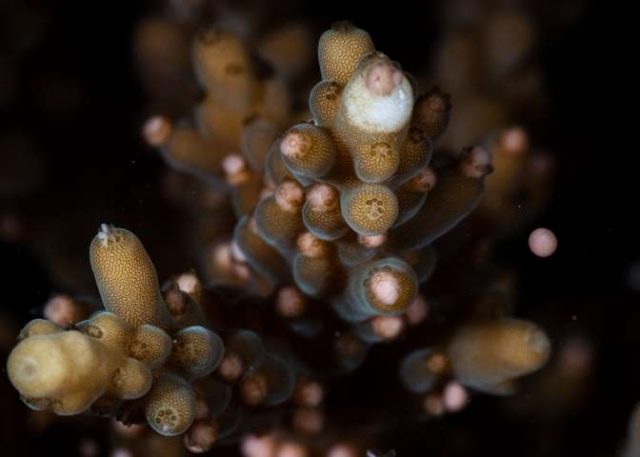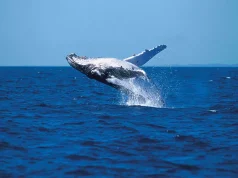
Soft corals on Moore Reef began releasing eggs and sperm last night (Saturday, November 16) with marine biologists expecting the annual synchronised coral spawn on the Great Barrier Reef to continue tonight with the hard corals.
Marine biologists Stuart Ireland from Calypso Productions, Gareth Phillips from Reef Teach, Pablo Cogollos from Sunlover Reef Cruises, and Jennie Gilbert co-founder of the Cairns Turtle Rehabilitation Centre were based on the Sunlover Moore Reef Marine Base, 54km off Cairns, to capture photos and video of the night-time coral spawning.
Mr Cogollos said the spawning behaviour mirrored that of previous years with soft corals spawning first and it was even more prolific this year.
“There was three times the volume of eggs and sperm compared to last year when the soft corals spawned four nights after the full moon and it was deemed to be the best coral spawn in five years,” he said.
“The most abundant soft coral to spawn was the Flexible Leather coral (Sinularia flexibilis), also the Finger Leather (Sinularia polydactyla) and Acropora Sp.
“The abundance of spawn seen last night is a positive indication that the reef is renewing. We hope to see similar results from the hard coral as we film the spawning again tonight.”
Mr Cogollos said Moore Reef was ideal because it had a great variety of corals alongside the pontoon which they used as a base to change diving equipment and light the Reef, allowing good footage each year.
“It is an extraordinary time to be out on the Great Barrier Reef as there is still so much we don’t know about the spawning. It was only discovered in 1982 and it happens just once a year,” he said.
Mr Ireland has been filming the coral spawn every year since 1996 and this will be the eighth year he has documented the event at Sunlover’s Moore Reef pontoon.
He said the special event showed that the Great Barrier Reef was resilient despite the challenges that man and climate change had thrown at the World Heritage Area.
“Every year is different and getting to see the coral spawn can be tricky as different reefs go off at different times so it is easy to be in the wrong place at the wrong time,” he said.
“The coral spawns on the outer Great Barrier Reef around two to six nights after the full moon in November when the water is 27-28C, which it has been for the past month.
“The corals release eggs and sperm around the same time to ensure a better chance of fertilisation. If you look at the tide chart four to six nights after the full moon, you will see there is little movement of water between the high and low tides.
“During this time coral spawn rises slowly to the surface where fertilisation begins and coral larva called planula is developed.
“The planula floats around in the water for several days before settling on the ocean floor where it buds and starts a new coral colony.
“Most reef fish are sleeping during the spawning, hence the eggs are not preyed upon. However, if there is a slick of spawn left in the morning then it is a feeding frenzy for these smaller fish.
“I enjoy filming the coral spawning every year as it gives me hope for the Great Barrier Reef.
“Despite the past bleaching events in 2016-2017, the fact we are seeing corals spawning means the functionality of the ecosystem is working, and while we see this, along with recruitment and regeneration, we can all have some hope about the Reef’s future.
“While we should all have hope that the Reef’s in-built resilience will prevail, the one thing I do stress is that as humans we need to minimise our impacts on the Reef so it can continue its natural cycles.”





